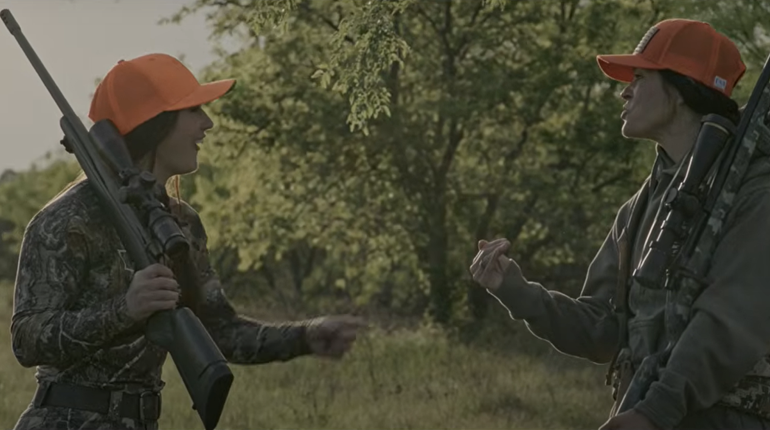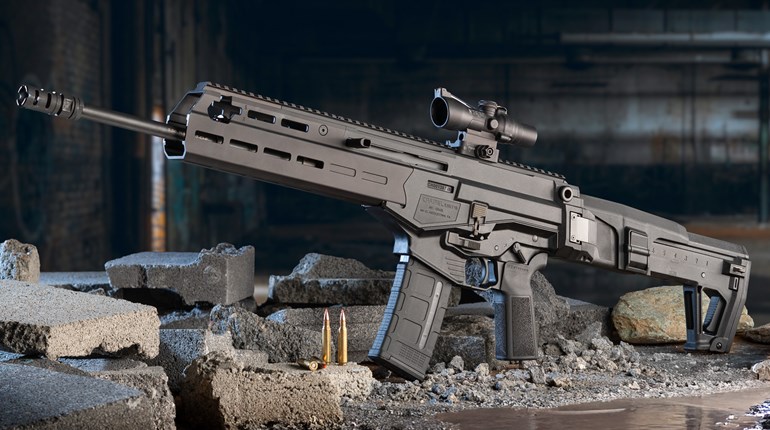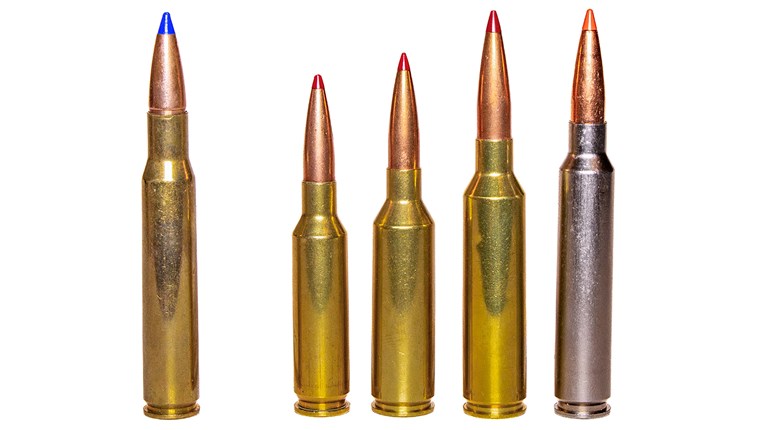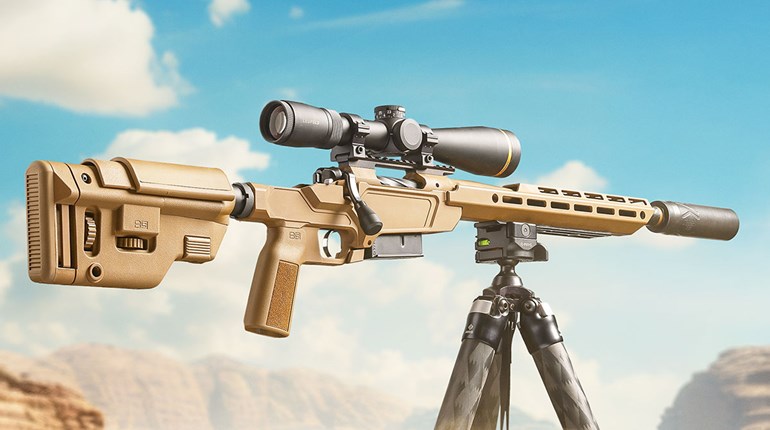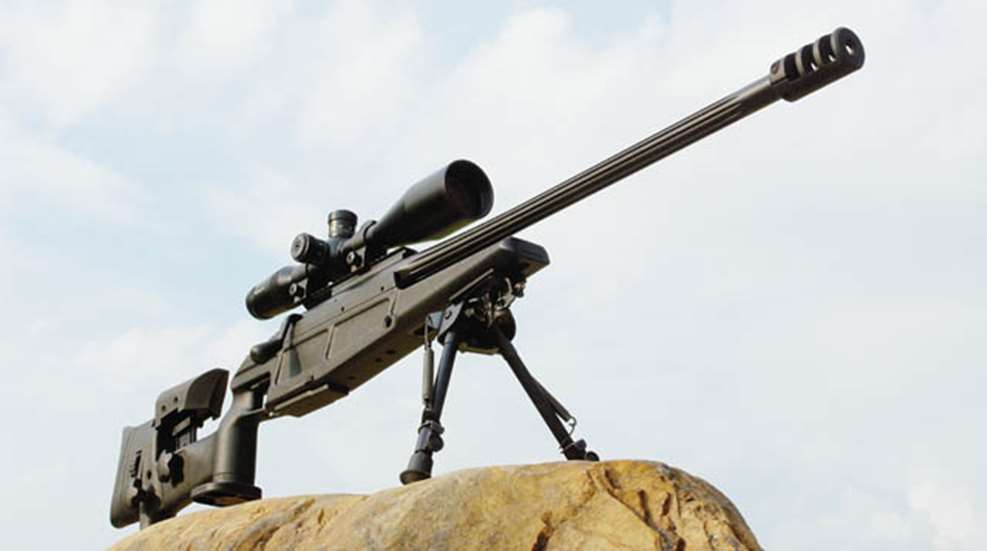
Even in his wildest dreams Horst Blaser could never have imagined this rifle. Blaser was a mechanic and working for his father driving a milk truck near his home in the south of Germany when he fell in love. The young lady's father, a gunsmith, told Blaser that unless he studied the trade to become one himself, he would not allow them to marry. One thing led to another, and by 1957 Blaser was making hunting rifles.
Today, the Blaser company is under different management and is recognized for building some of the most unique and innovative rifles on Earth. But, they are hunting oriented and I doubt Horst Blaser could have foreseen the dramatic rise in demand for tactical rifles, or predicted his rifles would enter that field.
From an objective observer's perspective, it was all but inevitable. The Blaser R 93, a straight-pull, bolt-action rifle is arguably the perfect platform for a tactical-sniper rifle. The R 93 is the ultimate kit gun, with interchangeable barrels, bolts and magazines. It has a reputation for outstanding accuracy and the straight-pull design is faster to operate than any conventional bolt action. Switching chamberings—even a change as extreme as .223 Rem. to .338 Lapua Mag.—takes less than 1 minute. The gun can switch from right- to left-handed just as fast.
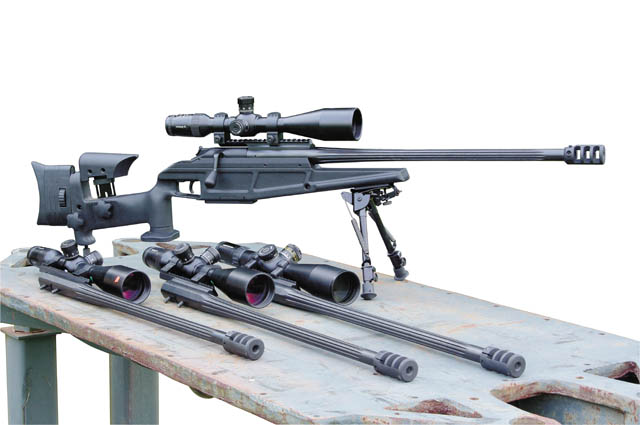
While the Blaser R 93 rifle may have its roots deeply etched in the traditions of European hunting, it has found a new calling in the ultra-modern American market of long-range tactical shooting. The Blaser Tactical 2 turns the R 93 platform into one of the most unique and well-designed tactical, designated-marksman rifles on the market today.
Blaser Tactical 2 rifles are available in four chamberings, .223 Rem., .308 Win., .300 Win. Mag. and .338 Lapua Mag. Barrels are plasma-nitrided to provide resistance against corrosion and abrasion. They are massive, measuring 1.34 inch at the breech and .944 inch at the muzzle for the .338 Lapua Mag., and have deep and narrow fluting—almost a serration—which aids cooling and looks fantastic. Barrels are also threaded at the muzzle and feature a big muzzle brake. With the heavy rifle and well-designed stock, even the massive .338 Lapua Mag. cartridge is pretty tame.
The tactical stock is adjustable for length of pull from 13.75 inches to 11.75 inches, with four .5-inch removable spacers. Its comb height has about 1 inch of vertical adjustment and is locked via a star-head thumbscrew, while the buttplate is adjustable up and down for height, locking with a thumb wheel. Surprisingly, the rifle's vertical grip is very comfortable while shooting off the bench or prone and it contains a large endcap to help control hand position. Shaped like a tapered wedge, the fore-end has a flat bottom to balance atop sandbags. This taper allows easy and fast elevation corrections by simply sliding the fore-end forward or back on a rest.
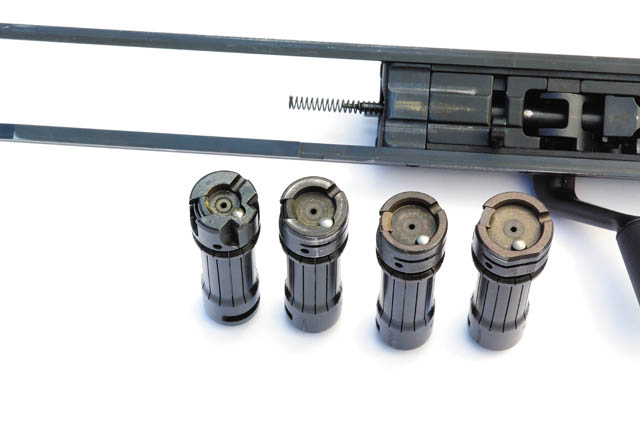
There is a metal insert in the fore-end with a slot cut in the bottom to accept a sling-swivel stud mounted on a plate. This allows about 5 inches of linear adjustment with the included bipod. By moving the bipod one way or the other in the slot, the tapered fore-end is again in play by changing the elevation. Both sides of the stock have front and rear pockets to accept the plunger-type, push-button sling swivels. The buttstock has a single, rear-support pod on the bottom containing 4.25 inches of fast adjustment by loosening a thumbscrew. Its bottom is threaded and has an additional .5 inch of fine adjustment for elevation control.
The Tactical 2's barrel beds to the stock with an aluminum block that is integral to the stock. A steel recoil lug is imbedded in the block and inserts into a slot milled in the barrel. Two captured screws in the stock are tightened with the supplied 4 mm T-wrench to secure the barrel. The barrel is fully free-floated ahead of the chamber, resulting in a large gap between the stock and the barrel to allow maximum airflow for cooling.
Each barrel is fitted with a 7.5-inch Picatinny rail, which creates a great mounting platform for optics. Because the rail is mounted on the barrel, scopes stay with the barrel when switching chamberings—ensuring zero is maintained. I switched barrels back and forth multiple times during the extensive testing of this rifle and could never detect any change in zero.
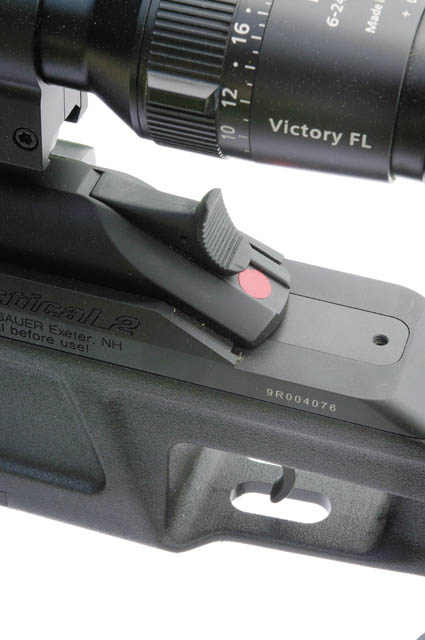
The magazine is a removable-box style, so simply inserting the appropriate version for the selected cartridge is all that's needed. The rifle's bolt head is easily removed without tools and switched to one that is the appropriate size for the cartridge selected. After pulling back on the bolt, push down on the bolt release and remove the bolt assembly from the rifle. Then push against a spring-loaded latch on the bottom of the assembly to slide it to the left and unlock the right side, which will release and swing open on a hinge. This frees the bolt-head assembly to be pulled out of the front, leaving behind the firing pin and spring. To switch chamberings, simply pick the bolt head needed for the cartridge, install it in the bolt assembly and push the bolt assembly back into the rifle. As stated earlier, I can easily make the change from one cartridge to another in well under 1 minute.
The R 93 action was truly ahead of its time. It's a straight-pull bolt action, so there is no need to turn the bolt, up or down. Instead, you simply pull straight back on the bolt handle to open the action and push it straight forward to close. Rather than two or more lugs on the bolt that turn into a recess in the receiver to lock the action like a conventional Mauser-style action, this bolt has a collet behind the head. The slotted collet has a raised ridge in the front. As the bolt is closed and cammed shut, the collet is pushed forward against a tapered section at the rear of the bolt head. This causes the front ridge to expand outward and into a slot in the barrel, locking the bolt to the barrel in full 360-degree contact. The harder the bolt pushes back, the tighter the collet holds.
It also provides for a concentric 360-degree lockup. Everything is centered, which accounts for part of the Tactical 2's accuracy.
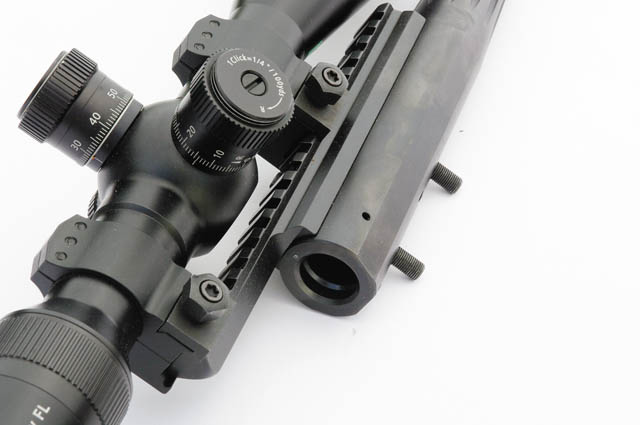
To operate this action, you simply pull back to open and push forward to close. It is incredibly fast. When shooting from a supported position with a left-handed bolt, a right-handed shooter can keep his strong hand on the trigger while his left hand stays with and operates the bolt. With practice, this becomes the fastest manually operated sniper-rifle system on the market. Of course, being a precision rifle, it features an extended bolt handle with a large knob for positive control.
Barrels and chambers are hammer forged. While many gun makers hammer forge their bores, they cut the chambers in a separate process. Blaser slips a slug of metal on a mandrel and when the machine is done pounding it into shape, a complete barrel is removed. This system keeps chamber dimensions, like the ultra-critical headspace, perfect every time while ensuring everything remains concentric and centered. No variations from reamer wear or operator error—every barrel is perfect.
Sporting a push-feed style of action, a substantial extractor clips over the cartridge rim as the bolt closes. There is a spring-loaded button ejector in the face of the bolt.
Squeezing the trigger pushes a pin out of the top of the back side of the receiver, which in turn pushes up on a lever in the bolt assembly and releases the firing pin. The trigger on the test rifle is a little bit stiff by Blaser standards at 3.5 pounds, but it can be adjusted down. It breaks clean and crisp.
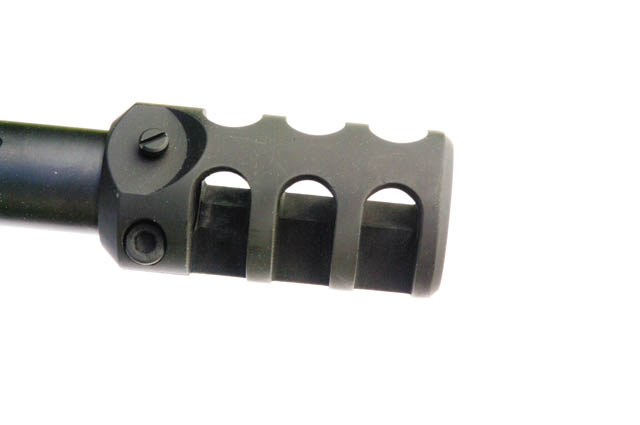
The Tactical 2 has a very safe design as the gun is carried uncocked. Its safety is pushed forward to cock the rifle. Uncock by pushing forward and down and let the spring return it to the uncocked position. After firing, the gun recocks automatically each time you work the action, so all you have to do is pull back on the bolt, push it forward and pull the trigger.
With all the adjustments on the stock, it can easily fit any shooter.
I am 5 feet, 8 inches and weigh 225 pounds, while my shooting buddy weighs 180 pounds and is 6 feet, 5 inches tall. I have short, thick arms, thick shoulders and a thick chest. He is all arms, angles and bones. Yet, we both shot this rifle and could switch back and forth with ease. The only adjustment that requires tools and takes a little time is the length of pull, so we reached a compromise on that. It's a bit long for me and a bit short for him, but it works for everybody.
The very first day we had the rifle, we sighted in the .338 Lapua Mag. barrel on our 250-yard target. I mistakenly left my staple gun in a different vehicle, and all we could find to hold our targets on the backstop were some big spikes designed for building log cabins. The head of the spike is a .5-inch circle and on a bet, I hit one with my second shot.
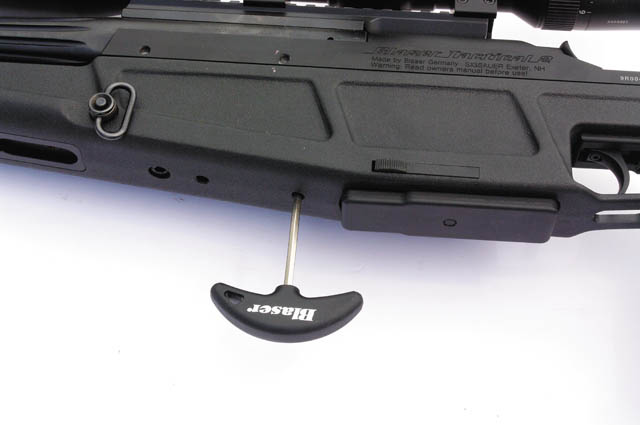
We do a lot of shooting with the .50 BMG at my friend's range and he even has a couple of steel targets at nearly 800 yards. While I enjoy the .50 BMG, it's a beast with lots of blast and recoil. The .338 Lapua Mag. does much of the same thing with less unpleasantness. With the bullet's high ballistic coefficient—approaching .8 for the 300-grain version—it shoots flat and hits very hard at long range. Not as hard as the .50 BMG, of course.
In .338 Lapua Mag., the Tactical 2 has a rifling twist rate of 1:10, which is just barely enough for the 300-grain bullets. In fact, I found it to be a bit finicky with that weight as some loads performed superbly, while others did not. I suspect the twist rate is a factor here. However, the cartridge was developed with a 250-grain bullet and the rifle shot well with everything in that weight.
The .300 Win. Mag. is my favorite of the four cartridges—providing a balance between velocity, power and recoil. The cartridge hits very hard and with the ballistic coefficient of some bullets in the mid-.6s, it too carries its power well. With five-shot groups as small as .65 inch using factory loads and an average of about 1.2 MOA with four different loads picked at random, it's accurate, too. The twist rate on the Blaser Tactical 2's .300 Win. Mag. barrel is 1:11, capping bullet weight at about 200-grains.
The only real complaint I have with this rifle is the rather slow twist rates for all of the cartridges chambered, which puts limits on the bullet weights that can be used with any realistic expectation of accuracy. I really think a faster twist, like a 1:9, would open up the possibilities for the .300 Win. Mag. However, the most common 190-grain loads shot very well.
The .308 Win. is the king of tactical rifle cartridges for a couple of reasons, one technical the other not. The "not" is because it's a NATO cartridge, which ensures ammo availability even in a crisis. The technical reason is the .308 Win. has always proven to be a very accurate cartridge, and in this rifle, there was no exception. My friend shot the last group of our extensive test with this cartridge and it tied for the best group of the entire rifle test.
Late on the second day, when we were tired, worn out and sick of shooting, he put five Federal Premium 168-grain Sierra bullets into slightly more than .4 inch at 100 yards. The .308 Win. cartridge was the most accurate of the test, with a .735-inch average for five, five-shot groups at 100 yards using four different ammo products. That's why marksmen love the .308. Just think of the possibilities for this rifle with handloads.
The .223 Rem. is a tamed tiger in the Blaser Tactical 2. Recoil is akin to a .22 rimfire. It proved to be very accurate and with the long barrel, the rifle extracts all the potential in this cartridge. The best five-shot group was .45 inch, tying my friend's .308 Win. group and the average for four ammo products was .857-inch.
Once again, the slow twist rate is a detriment. Sierra recommends at least a 1:7 twist rate for its 69-grain bullets. This barrel has a 1:10 twist, but it still shot that bullet weight very well. That may be due in part to the faster muzzle velocity generated by the longer barrel. I would really like to see a 1:7 twist rate to allow some of the bullets on the market with high ballistic coefficients to be used.
The rifle also needs higher-capacity magazines, but that's in the works and they may well be on the market by the time you read this. As stated, I would like a faster twist rate for all the barrels, but the truth is they shoot very well with the most-common bullet weights for tactical use in each of the cartridges, so it's probably a bit of nit-picking. All in all, I really like the Blaser Tactical 2. The ergonomics are excellent. It is accurate and it maintains its accuracy even with hot barrels. It is extremely fast on follow-up shots and is dependable, with zero malfunctions after hundreds of rounds through multiple barrels. What's more, it's extremely easy to clean and maintain.
Though it is on the expensive side, you get what you pay for. Horst Blaser could not have seen this rifle coming, but I have no doubt he would be very proud of how it performs.
Manufacturer: Blaser Jagdwaffen
Importer: Blaser USA; (210) 377-2527
Acton Type: Bolt action
Caliber: .223 Rem., .308 Win., .300 Win. Mag., .338 Lapua Mag.
Capacity: Five rounds (.223 Rem., .308 Win.), four rounds (.300 Win. Mag., .338 Lapua Mag.)
Stock: Synthetic
Sights: None, Picatinny rail for mounting optics
Barrel: 24.7 inches (.223 Rem., .308 Win.), 25.6 inches (.300 Win. Mag.), 27 inches (.338 Lapua Mag.)
Rifling: Four grooves, 1:10-inch RH twist (.223 Rem.,), four grooves, 1:11-inch RH twist (.308 Win.), six grooves, 1:11-inch RH twist (.300 Win. Mag.), six grooves, 1:10-inch RH twist (.338 Lapua Mag.)
Trigger Pull Weight: 3.5 pounds
Overall Length: 44.5 inches (.223 Rem., .308 Win.), 45.5 inches (.300 Win. Mag.), 46.9 inches (.338 Lapua Mag.)
Weight: 11.9 pounds (.223 Rem., .308 Win.), 12.1 pounds (.308 Win.), 12.6 pounds (.338 Lapua Mag.)
MSRP: $4,469 (.223 Rem., .308 Win., .300 Win. Mag.), $4,793 (.338 Lapua Mag.)












